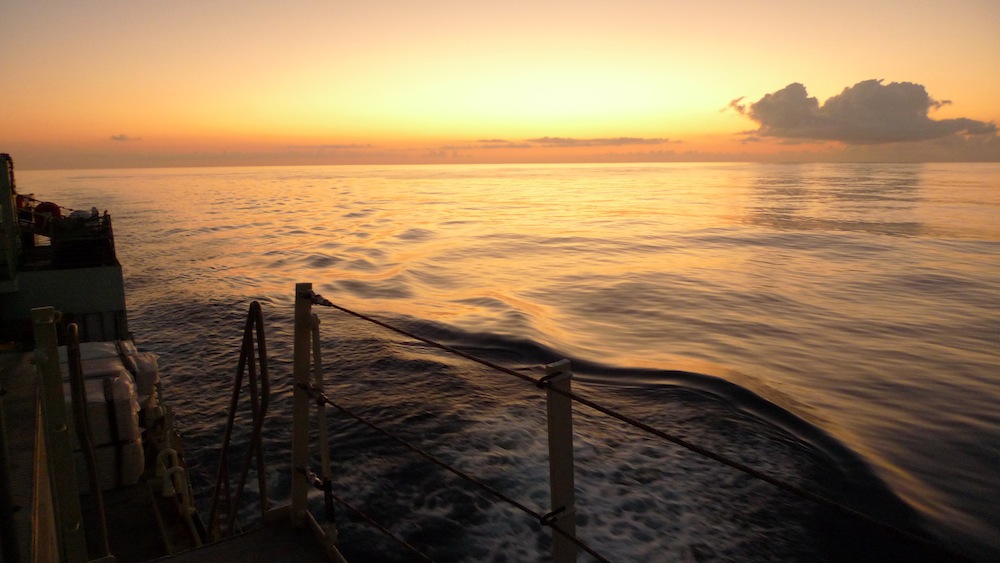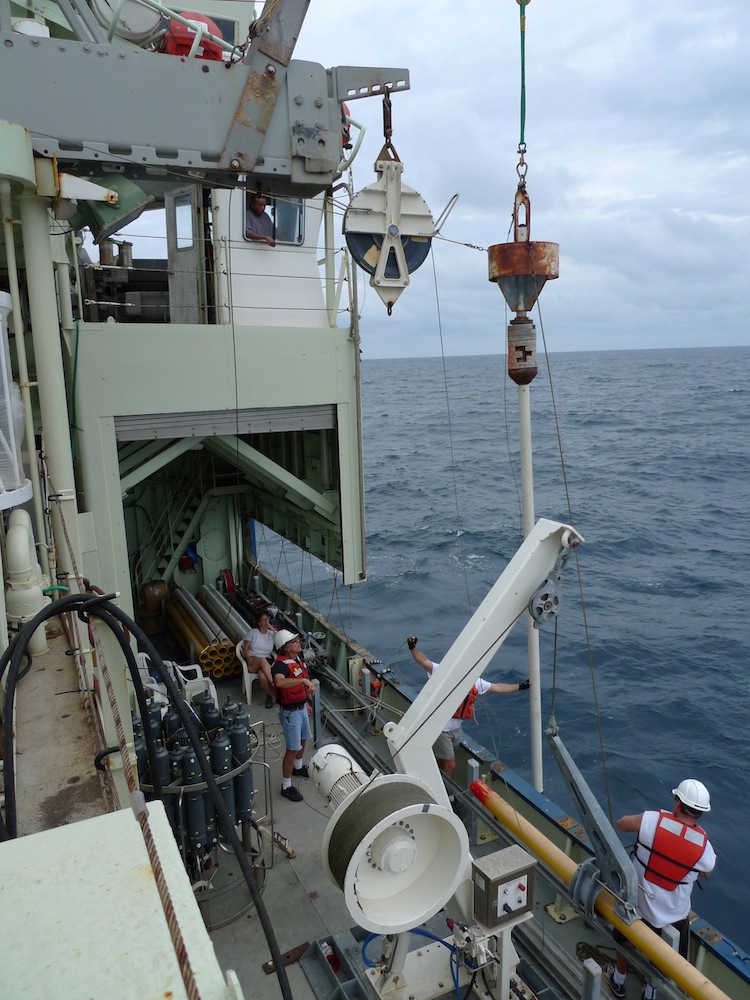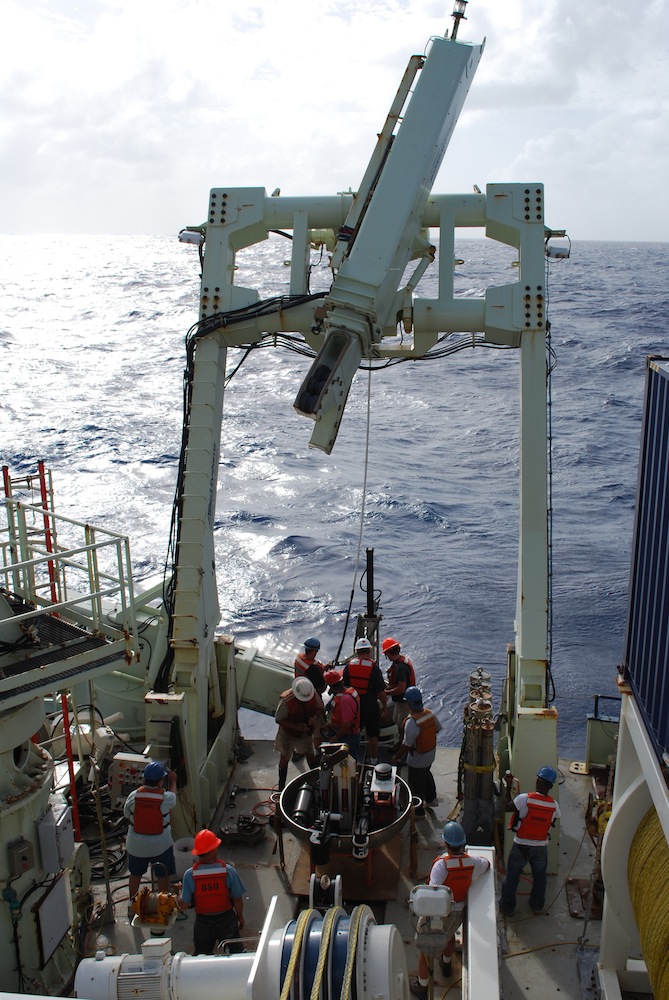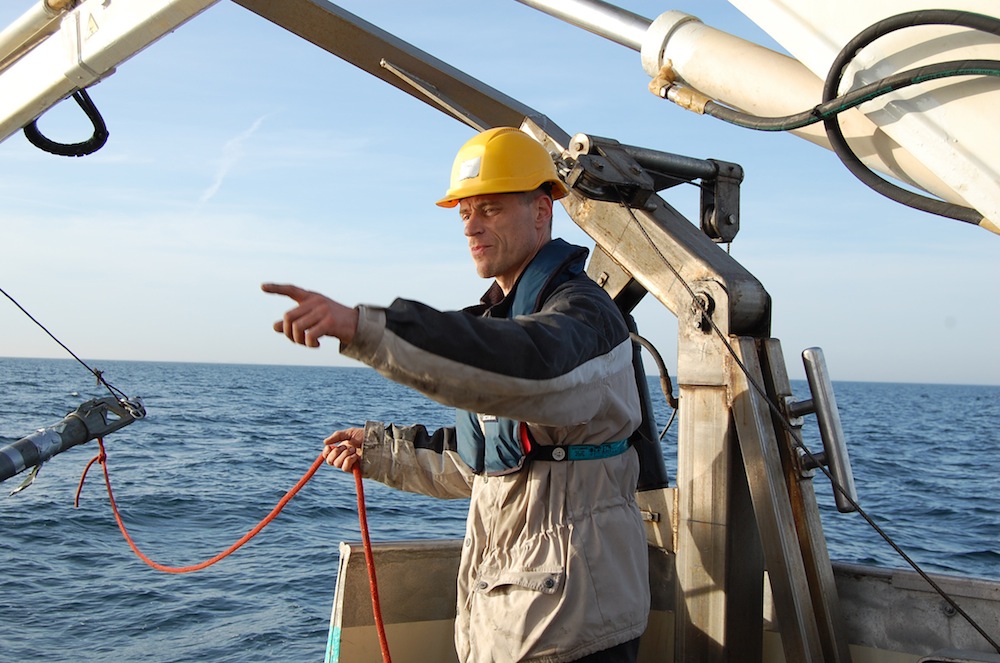Expedition Gallery: Studying the Seafloor
Equatorial Calm

Calm seas on the equator during the research expedition of the R/V Knorr.
Scientist at Sunset

The scientific crew worked 12 hour shifts for 42 days aboard the Knorr.
R/V Knorr

The research vessel Knorr anchored in Costa Rica.
Core Comes Aboard

A 10-foot (3 meter) core of the seafloor comes aboard the R/V Knorr. Scientists analyzed the oxygen levels inside the sediment to measure the metabolisms of microbes inside.
Sampling the Seafloor

A 98 foot (30 meter) core pulled from the seafloor. Photo by Hans Roy.
Aquatic Ecologist Hans Roy

Hans Roy guides a sediment core on board on another research voyage.
Core Sample

An example of a core sample (this one with sediment dating back to the Ice Age).
Get the world’s most fascinating discoveries delivered straight to your inbox.
Opening a Core

Researcher Hans Roy opens a sediment core (not taken on the R/V Knorr expedition). The sediment in the core has not seen the sun for 10,000 years.

Stephanie Pappas is a contributing writer for Live Science, covering topics ranging from geoscience to archaeology to the human brain and behavior. She was previously a senior writer for Live Science but is now a freelancer based in Denver, Colorado, and regularly contributes to Scientific American and The Monitor, the monthly magazine of the American Psychological Association. Stephanie received a bachelor's degree in psychology from the University of South Carolina and a graduate certificate in science communication from the University of California, Santa Cruz.


